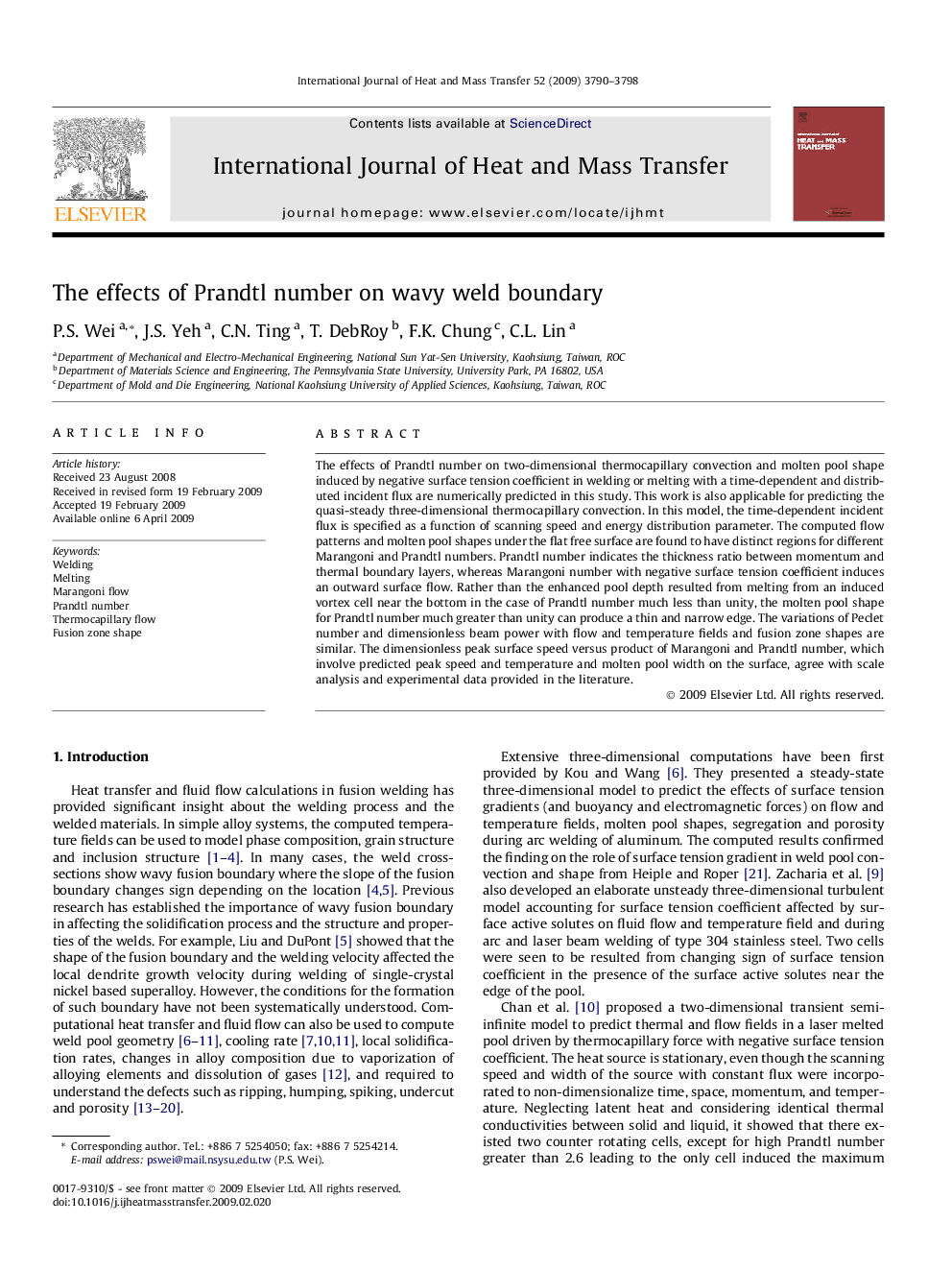| Article ID | Journal | Published Year | Pages | File Type |
|---|---|---|---|---|
| 659664 | International Journal of Heat and Mass Transfer | 2009 | 9 Pages |
The effects of Prandtl number on two-dimensional thermocapillary convection and molten pool shape induced by negative surface tension coefficient in welding or melting with a time-dependent and distributed incident flux are numerically predicted in this study. This work is also applicable for predicting the quasi-steady three-dimensional thermocapillary convection. In this model, the time-dependent incident flux is specified as a function of scanning speed and energy distribution parameter. The computed flow patterns and molten pool shapes under the flat free surface are found to have distinct regions for different Marangoni and Prandtl numbers. Prandtl number indicates the thickness ratio between momentum and thermal boundary layers, whereas Marangoni number with negative surface tension coefficient induces an outward surface flow. Rather than the enhanced pool depth resulted from melting from an induced vortex cell near the bottom in the case of Prandtl number much less than unity, the molten pool shape for Prandtl number much greater than unity can produce a thin and narrow edge. The variations of Peclet number and dimensionless beam power with flow and temperature fields and fusion zone shapes are similar. The dimensionless peak surface speed versus product of Marangoni and Prandtl number, which involve predicted peak speed and temperature and molten pool width on the surface, agree with scale analysis and experimental data provided in the literature.
